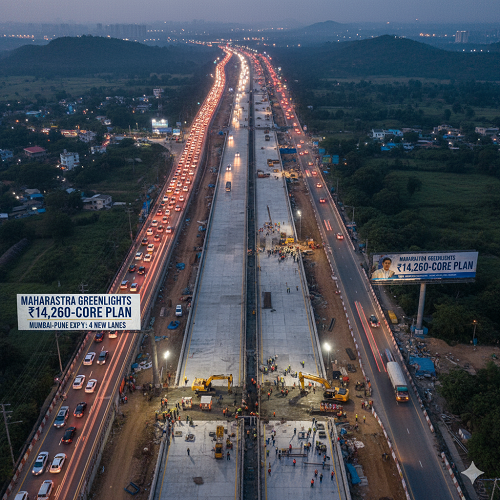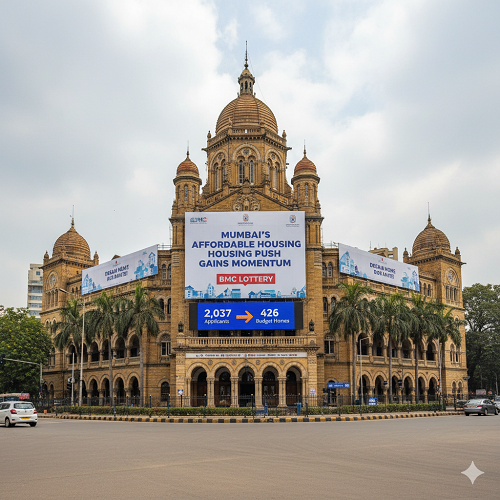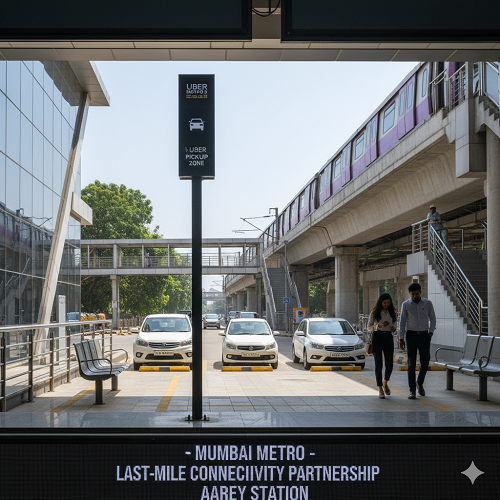
Akasa Air Takes First-Mover Lead at Navi Mumbai International Airport: A Strategic Shift for India’s Fastest-Growing Aviation Market
Akasa Air’s decision to launch operations from the upcoming Navi Mumbai International Airport (NMI) on 25 December 2025 is more than an operational milestone. It signals a calibrated strategic move in a market that continues to expand at double-digit growth rates. With India crossing nearly 150 million domestic passengers in 2024 and the Mumbai Metropolitan Region (MMR) operating at chronic capacity strain, NMI’s entry is a structural boost to national aviation capacity. Akasa’s early commitment positions the carrier at the heart of this transition.
The airline’s operations will begin shortly after the airport’s inauguration by the Prime Minister on 8 October. A December rollout ensures immediate visibility during peak travel season, while giving the carrier a strong foothold in a catchment area of more than 12 million people spread across Navi Mumbai, Thane, Kalyan-Dombivli and Raigad.
A Symbolic Launch Timed with High-Demand Season
Akasa Air will operate two inaugural Delhi services on Christmas Day. Flight QP 1831 will depart Delhi at 05:25 for an 08:10 arrival at NMI, and the return flight QP 1832 will push back at 08:50, reaching Delhi at 11:15. These flights operate only on the launch day and mark the first commercial operations from the new airport.
The choice of December 25 provides symbolic weight and operational advantage. Airlines globally use high-profile dates to anchor inaugural flights, ensuring maximum visibility and early customer engagement. For an airport intended to decongest one of India’s busiest aviation hubs, such signalling matters.
Daily Operations Begin Immediately After
From 26 December, Akasa transitions into a stable daily schedule between NMI and Delhi. The morning Delhi departure at 06:30 reaches NMI at 08:50, followed by a 10:55 return that lands in Delhi at 13:15. Daily frequency on India’s most travelled air corridor reflects an expectation of consistent passenger demand.
The Delhi–Mumbai sector historically contributes 8–9 percent of India’s domestic aviation volume. With NMI providing new runway and terminal capacity, airlines now have space to build competitive schedules that were previously constrained at Mumbai’s saturated Chhatrapati Shivaji Maharaj International Airport (CSMIA).
Strengthening Leisure and Regional Connectivity: Goa and Kochi
Akasa has complemented its metro-to-metro strategy with targeted leisure and regional routes.
Daily flights between NMI and Goa’s Mopa Airport begin 25 December. QP 1928 departs Goa at 15:40 and reaches NMI at 17:00. Its return, QP 1927, leaves NMI at 17:40, landing in Goa at 18:55. The service operates every day except Wednesday.
Goa sees year-round demand from both leisure and business travellers. As airlines increasingly shift operations from Dabolim to the newer Mopa facility, Akasa reinforces its presence across modern, capacity-rich airports, aligning with its growth strategy.
Connectivity to Kochi launches on 26 December with flights operating exclusively on Fridays and Saturdays. QP 1914 departs Kochi at 10:50 and arrives at NMI at 12:45, followed by the return QP 1915 at 13:30 with a 15:30 arrival. Additional rotations commence on 28 December, operating on Tuesdays, Wednesdays and Sundays. This frequency pattern reflects the strong VFR, tourism and business demand between Mumbai and Kerala.
Expanding the Western India Network: NMI–Ahmedabad
From 31 December, Akasa adds Ahmedabad to the network with weekly Wednesday flights. QP 1916 departs NMI at 17:40 and arrives in Ahmedabad at 18:50. This route ties together three major economic centres, Mumbai, Navi Mumbai and Ahmedabad, forming a high-intensity industrial triangle.
Business travel between these cities has historically been among India’s highest. As Navi Mumbai evolves into a thriving logistics, IT and manufacturing cluster, demand on this route is poised to increase.
Strategic Significance of Early Entry at NMI
Airlines that secure early access to infrastructure benefit from stronger slot positions, better ground arrangements and early brand association with the airport’s identity. Akasa’s move offers distinct strategic advantages:
1. Relief from Mumbai’s slot saturation: With CSMIA routinely operating at near-maximum capacity, airlines struggle for peak-hour slots. NMI provides a rare window of availability, enabling Akasa to build predictable, high-quality schedules.
2. Access to a large and underserved catchment: The eastern and southern MMR suburbs face long commute times to CSMIA. NMI reduces travel time by 30–60 minutes for millions, increasing the likelihood of consistent traffic growth.
3. Strengthening the region’s multi-airport ecosystem: Major global metros rely on multi-airport systems to handle scale. Mumbai’s transition to a dual-airport network aligns it with global aviation cities like London and New York.
4. First-mover advantage in customer retention: Early operations cultivate loyalty among travellers who shift their primary airport preference to NMI, particularly residents of Navi Mumbai, Thane and Raigad.
An Aviation Landscape Undergoing Structural Expansion
India’s domestic aviation market has averaged 12–14 percent annual growth over the past decade. Rising disposable incomes, increased business travel, and expanding regional connectivity have pushed demand to unprecedented levels. The government’s UDAN scheme, combined with private-sector investments in fleet expansion and airport infrastructure, has transformed flying into a mass-aspirational mobility option.
The launch of NMI is one of the most consequential infrastructure developments of the decade. It adds much-needed capacity to a region that contributes heavily to India’s GDP and logistics movement. For airlines, the arrival of a second major airport in MMR opens new pathways for expansion.
Akasa Air, one of the world’s fastest-growing young airlines since its 2022 launch, continues to scale aggressively. Its early commitment to NMI reflects confidence in India’s long-term aviation fundamentals and a clear strategy to embed itself in emerging high-demand corridors.
A New Aviation Era for Navi Mumbai
With bookings now open through Akasa’s website, mobile app and partner networks, the airline is preparing for a major network expansion phase from NMI. Additional routes and higher frequencies are likely as the airport strengthens operational stability and passenger demand patterns evolve.
For the travelling public, Akasa’s early presence symbolizes the beginning of a new aviation era for Navi Mumbai. For the aviation sector, it marks a critical step in India’s transition toward a higher-capacity, multi-airport future driven by rising demand, modern infrastructure and strategic airline planning.




